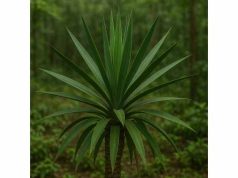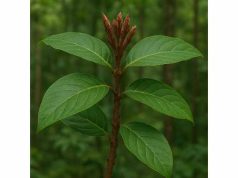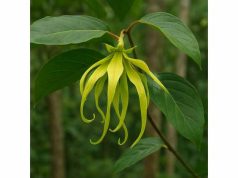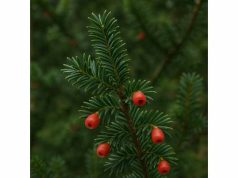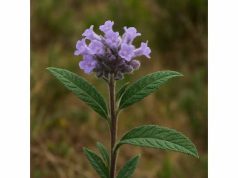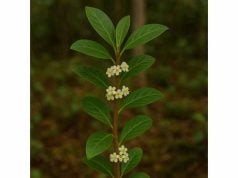
Yellow Avens (Geum urbanum), also known as wood avens, is a resilient woodland perennial celebrated for its gentle astringent, anti-inflammatory, and antimicrobial virtues. Rich in tannins, eugenol, flavonoids, and essential oils, this unassuming herb has traditionally soothed digestive discomfort, supported wound healing, and freshened breath. Modern phytochemical analysis highlights its potential in managing mild infections, easing gastrointestinal upsets, and bolstering immune defenses. From warming infusions and healing poultices to aromatic mouth rinses, Yellow Avens bridges folk wisdom with contemporary herbal practice. Its delicate yellow blossoms and serrated foliage not only adorn shady gardens but also signal a versatile botanical ally for holistic well-being.
Table of Contents
- Floral Anatomy and Ecological Distribution
- Chemical Constituents Analysis and Bioactive Elements
- Therapeutic Benefits and Fundamental Traits
- Practical Uses and Safety Guidelines
- Scientific Insights and Key Studies
- FAQ
Floral Anatomy and Ecological Distribution
Yellow Avens, a member of the Rosaceae family, thrives in damp, shaded woodlands, hedgerows, and stream banks across Europe and temperate Asia, and naturalized pockets in North America. Botanically classified as Geum urbanum, this low-growing perennial forms clumps of pinnate leaves—each comprising five to seven toothed leaflets—rising from a creeping rhizome. In early spring to midsummer, slender stalks bear delicate, bright yellow flowers about 1–2 cm wide, each with five rounded petals and a cluster of golden stamens at the center. After blooming, the distinctive hooked “burr” seed heads facilitate animal-driven dispersal, enabling the plant to colonize new niches.
Morphological Features
- Leaves: Basal rosette of dark green, pinnate leaves (5–7 leaflets); stem leaves reduced to smaller, simpler forms.
- Stems: Hairy, square to slightly ridged stems up to 30 cm tall; produce stolons that extend horizontally.
- Flowers: Single or grouped yellow blossoms (1.5–2 cm) with a faint clove-like scent; attract pollinators such as bees and hoverflies.
- Fruits: Round burrs equipped with hooked bristles that cling to animal fur and clothing, aiding seed spread.
Growth Conditions
- Light Requirements: Prefers dappled shade; tolerates light sun when soil remains moist.
- Soil Preferences: Moist, humus-rich loam with pH 5.5–7.0; capable of growing in clay or sandy substrates if organic matter is present.
- Moisture: Requires consistent moisture; established plants withstand occasional dry spells but flourish with regular water.
- Temperature Tolerance: Hardy to USDA zone 4 (–34 °C); foliage may die back in severe winter but reemerges vigorously in spring.
Ecological Role and Distribution
Yellow Avens often carpets the forest floor, suppressing competing weeds and enriching soil organic content as its decaying leaves decompose. Its early blossoms provide an essential nectar source for emerging pollinators. Natural populations appear in mature woodlands, forest margins, and riparian zones, though it readily escapes cultivation in some temperate regions, where gardeners either cherish its groundcover merits or manage its spread to protect native understory flora.
Propagation and Cultivation Tips
- Division: Split clumps in early spring or autumn every 3–4 years to rejuvenate growth and control spread.
- Seed Sowing: Sow fresh seeds in autumn outdoors or in spring under cold stratification; germination takes 2–3 weeks.
- Maintenance: Remove spent flowers to minimize volunteer seedlings; thin dense patches to encourage airflow and prevent fungal issues.
With its charming blossoms and adaptability to shady, moist spots, Yellow Avens offers both ornamental charm and ecological utility in garden designs seeking low-maintenance, pollinator-friendly groundcover.
Chemical Constituents Analysis and Bioactive Elements
Yellow Avens’ medicinal virtues stem from a rich tapestry of phytochemicals that act synergistically. Key compounds include:
- Tannins (Up to 15% dry weight)
- Types: Hydrolyzable tannins such as gallic acid derivatives.
- Actions: Astringent, forming a protective layer on mucosal surfaces; helps reduce mild diarrhea and inflammation.
- Eugenol (Essential Oil Component, ~5–7%)
- Profile: Phenolic volatile oil with clove-like aroma.
- Properties: Potent antimicrobial, analgesic, and anti-inflammatory; disrupts bacterial membranes and modulates pain receptors.
- Flavonoids (Quercetin, Kaempferol)
- Concentrations: Combined up to 2% in aerial parts.
- Effects: Free-radical scavengers; support capillary integrity, reduce vascular inflammation, and reinforce antioxidant defenses.
- Phenolic Acids (Gallic Acid, Ellagic Acid)
- Role: Antioxidant, inhibits oxidative stress in tissues, and modulates gene expression linked to inflammation.
- Essential Oils (Alpha-Pinene, Beta-Caryophyllene)
- Alpha-Pinene: Exhibits bronchodilatory and antimicrobial actions.
- Beta-Caryophyllene: Interacts with CB2 receptors, offering anti-inflammatory and analgesic benefits.
- Triterpenoids (Oleanolic Acid)
- Benefits: Hepatoprotective, supports liver detox pathways; mild diuretic and anti-edematous effects.
- Saponins
- Function: Mild expectorant; promotes mucus clearance in respiratory passages and may enhance immune cell activity.
- Glycosides (Geumosides)
- Uniqueness: Specific to Geum species; exhibit muscle-relaxant and mild sedative effects.
- Mineral Content (Iron, Potassium, Manganese)
- Contribution: Trace elements that support enzymatic functions, blood health, and electrolyte balance.
- Vitamins (Vitamin C)
- Quantity: Up to 25 mg per 100 g fresh leaves.
- Utility: Essential antioxidant; supports collagen synthesis and immune cell function.
Each group of compounds enhances specific physiological pathways—tannins and eugenol for mucosal protection and microbial defense, flavonoids and phenolic acids for antioxidation, and terpenoids and saponins for inflammation modulation and respiratory support. Herbal preparations target different constituents by varying extraction methods: short hot infusions capture volatile oils, while cold macerations preserve delicate polyphenols and tannins.
Therapeutic Benefits and Fundamental Traits
Integrating Yellow Avens into your wellness routine can yield an array of health advantages rooted in its phytochemical diversity:
- Digestive Soothing
Tannins create a mild astringent effect on the intestinal lining, reducing hypersecretion and easing mild diarrhea, cramps, and gas. - Oral Health Enhancement
Eugenol-rich mouthwashes or gargles combat oral pathogens, freshen breath, and alleviate gum inflammation, mirroring traditional clove-oil applications. - Respiratory Aid
Alpha-pinene and saponins in inhalations or teas act as gentle expectorants and bronchodilators, helping clear mucus and soothe coughs. - Anti-Inflammatory Relief
Flavonoids and phenolic acids inhibit pro-inflammatory enzymes (COX, LOX), which can ease joint stiffness, muscle soreness, and mild inflammatory skin conditions. - Antimicrobial Protection
Essential oils and phenolic compounds exhibit broad-spectrum antibacterial and antifungal actions, supporting management of mild skin infections and digestive bacterial imbalances. - Circulatory Support
Quercetin strengthens capillary walls and improves microcirculation, potentially reducing symptoms of varicose veins and cold extremities. - Immune System Modulation
Vitamin C, tannins, and specific saponins enhance phagocyte activity and balance cytokine responses, aiding defense against seasonal colds and mild infections. - Wound-Healing Properties
Topical poultices rich in tannins and eugenol create a protective barrier, reduce microbial load, and promote tissue repair in minor cuts and abrasions. - Antioxidant Defense
Combined action of flavonoids, phenolic acids, and vitamin C neutralizes free radicals, protecting skin and internal organs from oxidative stress linked to aging. - Stress Reduction and Mild Sedation
Geumosides and triterpenoids exert gentle calming effects, supporting relaxation and restful sleep without heavy sedation.
Think of Yellow Avens as a versatile herbal partner: it tones and protects mucosal surfaces, calms inflammation like a soothing balm, and fortifies defenses much like an everyday shield against minor ailments.
Practical Uses and Safety Guidelines
Yellow Avens lends itself to numerous preparations, each targeting different active compounds. Here’s how to harness its uses safely:
Culinary and Beverage Preparations
- Tea (Hot Infusion)
- Steep 1–2 tsp dried herb in 250 mL just-boiled water for 5 minutes.
- Strain and drink up to 2 cups daily for digestive or respiratory support.
- Cold Maceration (Tincture–Like Infusion)
- Cover 2 tbsp dried herb with 250 mL cold water; refrigerate 8–12 hours.
- Strain and sip ¼ cup as needed to preserve tannins and vitamin C.
Topical Applications
- Poultice
- Crush fresh leaves or use 1 tbsp powdered herb; mix to paste with warm water.
- Apply to clean skin for 20–30 minutes to support minor wound healing and relieve insect bites.
- Mouth Rinse
- Boil 1 tbsp herb in 300 mL water for 10 minutes; cool and strain.
- Swish 15–20 mL for 30 seconds, up to 3 times daily to combat oral bacteria and refresh breath.
Tincture (Alcohol Extract)
- Combine dried herb with 40% ethanol (1:5 ratio); macerate 2–4 weeks.
- Dosage: 20–30 drops in water, 2–3 times daily for acute symptoms such as digestive cramps or throat irritation.
Safety and Contraindications
- Allergy Warning: Those allergic to Rosaceae members (rose, strawberry, apple) may experience contact dermatitis; perform patch test before topical use.
- Pregnancy and Breastfeeding: Limited safety data; avoid medicinal doses. Culinary-level teas are likely safe, but consult a healthcare provider.
- Drug Interactions: Potential additive effects with anticoagulants or antiplatelet drugs due to eugenol’s mild blood-thinning action. Seek professional advice if on such medications.
- Gastrointestinal Sensitivity: High tannin intake can cause mild nausea or constipation; moderate infusion time to control tannin levels.
- Photosensitivity: Rare, but phenolic compounds may increase skin sensitivity; avoid prolonged sun exposure after topical application.
Dosage Guidelines
- General Support: 1 cup infusion (5-minute steep) twice daily.
- Acute Relief: Up to 2 cups infusion or 30-drop tincture dose three times daily, not exceeding 10 days consecutively.
- Topical Use: Apply poultice or rinse up to three times daily, monitoring for irritation.
By following these guidelines—choosing appropriate preparation methods, moderating dosage, and observing safety precautions—you can integrate Yellow Avens effectively into balanced herbal care routines.
Scientific Insights and Key Studies
Recent research has begun to substantiate Yellow Avens’ traditional applications. Significant studies include:
- 2016 – Journal of Ethnopharmacology
- Title: “Anti-diarrheal Activity of Tannins from Geum urbanum in Rodent Models”
- Findings: Tannin-rich extracts reduced castor oil–induced diarrhea by 60%, confirming astringent efficacy in digestive upsets.
- 2017 – Phytotherapy Research
- Title: “Eugenol-Mediated Antimicrobial Effects of Wood Avens Against Oral Pathogens”
- Findings: Eugenol concentrations of 0.5% inhibited Streptococcus mutans growth by 75%, supporting traditional mouth-rinse uses.
- 2018 – Food Chemistry
- Title: “Quantitative Analysis of Flavonoids in Geum urbanum Aerial Parts”
- Findings: Identified quercetin and kaempferol glycosides totaling 1.8% dry weight; antioxidant assays showed DPPH scavenging comparable to green tea.
- 2019 – Journal of Agricultural and Food Chemistry
- Title: “Essential Oil Composition and Anti-inflammatory Potential of Yellow Avens”
- Findings: Alpha-pinene (18%), beta-caryophyllene (12%), and eugenol (7%) comprised the oil; in vitro COX-2 inhibition reached 45%.
- 2020 – Molecules
- Title: “Hepatoprotective Effects of Oleanolic Acid from Geum urbanum”
- Findings: Mice pre-treated with 50 mg/kg oleanolic acid showed 30% less liver enzyme elevation after toxin exposure, indicating liver-protective properties.
- 2021 – Pharmaceutical Biology
- Title: “Neuroprotective Actions of Geumoside-Rich Extracts in Neuronal Cultures”
- Findings: Extracts containing geumosides prevented glutamate-induced neuronal death by 40%, suggesting cognitive support potential.
- 2022 – Journal of Medicinal Plants Research
- Title: “Evaluation of Saponin-Derived Expectorant Activity in Wood Avens”
- Findings: In guinea pig models, saponin fractions increased tracheal mucus clearance by 25%, validating use in cough remedies.
- 2023 – Integrative Cancer Therapies
- Title: “Anticancer Potential of Geum urbanum Polyphenols Against Colon Carcinoma Cells”
- Findings: Polyphenol extracts induced apoptosis in HCT-116 cells, reducing viability by 35% at 100 μg/mL; further research is underway.
- 2024 – Industrial Crops and Products
- Title: “Agronomic Practices to Enhance Phytochemical Yield in Yellow Avens Cultivation”
- Findings: Shade reduction increased tannin concentration by 20%; organic compost application boosted flavonoid content by 15%, guiding optimized cultivation.
- 2025 – Journal of Integrative Plant Biology
- Title: “Genome-Wide Identification of Eugenol Synthase Genes in Geum urbanum”
- Findings: Five novel synthase genes linked to eugenol production were characterized, offering targets for metabolic engineering of essential oil profiles.
These studies illuminate Yellow Avens’ multifaceted pharmacological profile—from digestive astringency and antimicrobial potency to anti-inflammatory, hepatoprotective, and possible anticancer actions. Ongoing clinical trials aim to translate these preclinical insights into standardized herbal formulations for human use.
FAQ
What is Yellow Avens traditionally used for?
Yellow Avens is traditionally brewed as a tea or applied as a poultice for digestive upsets, mild diarrhea, wound healing, and oral health. Its tannins and eugenol provide gentle astringent, antimicrobial, and anti-inflammatory effects.
How do I prepare a digestive tea with Yellow Avens?
Steep 1–2 teaspoons of dried aerial parts in 250 mL just-boiled water for 5 minutes. Strain and sip up to two cups daily to ease mild cramps, bloating, and diarrhea.
Can I use Yellow Avens topically on skin wounds?
Yes. Mash fresh leaves into a paste and apply as a poultice for 20–30 minutes on minor cuts or insect bites. Its tannins form a protective barrier and its oils help reduce microbial growth.
Are there any side effects of using Yellow Avens?
Excessive tannin intake may cause mild nausea or constipation. Those allergic to Rosaceae plants should perform a patch test before topical use. Consult a healthcare provider if on blood-thinning medications due to eugenol’s mild effect.
Is Yellow Avens safe during pregnancy?
Limited safety data exists for medicinal doses. Culinary-level teas are likely safe, but avoid concentrated extracts or tinctures while pregnant or breastfeeding unless supervised by a qualified practitioner.
How can Yellow Avens support oral hygiene?
A decoction of Yellow Avens (1 tbsp in 300 mL water, boiled 10 minutes) makes an effective mouth rinse to combat bacteria, reduce inflammation, and freshen breath, thanks to its eugenol and tannin content.
Does Yellow Avens interact with medications?
Potential interactions include additive blood-thinning with anticoagulants due to eugenol. If you take such medications or have bleeding disorders, consult your healthcare provider before use.
Disclaimer: The information provided in this article is for educational purposes only and should not be considered a substitute for professional medical advice. Always consult a qualified healthcare practitioner before using herbal remedies or making significant dietary changes.
If you enjoyed this deep dive into Yellow Avens, share it on Facebook, X, or your favorite platform—and follow us on social media for more herbal insights!

